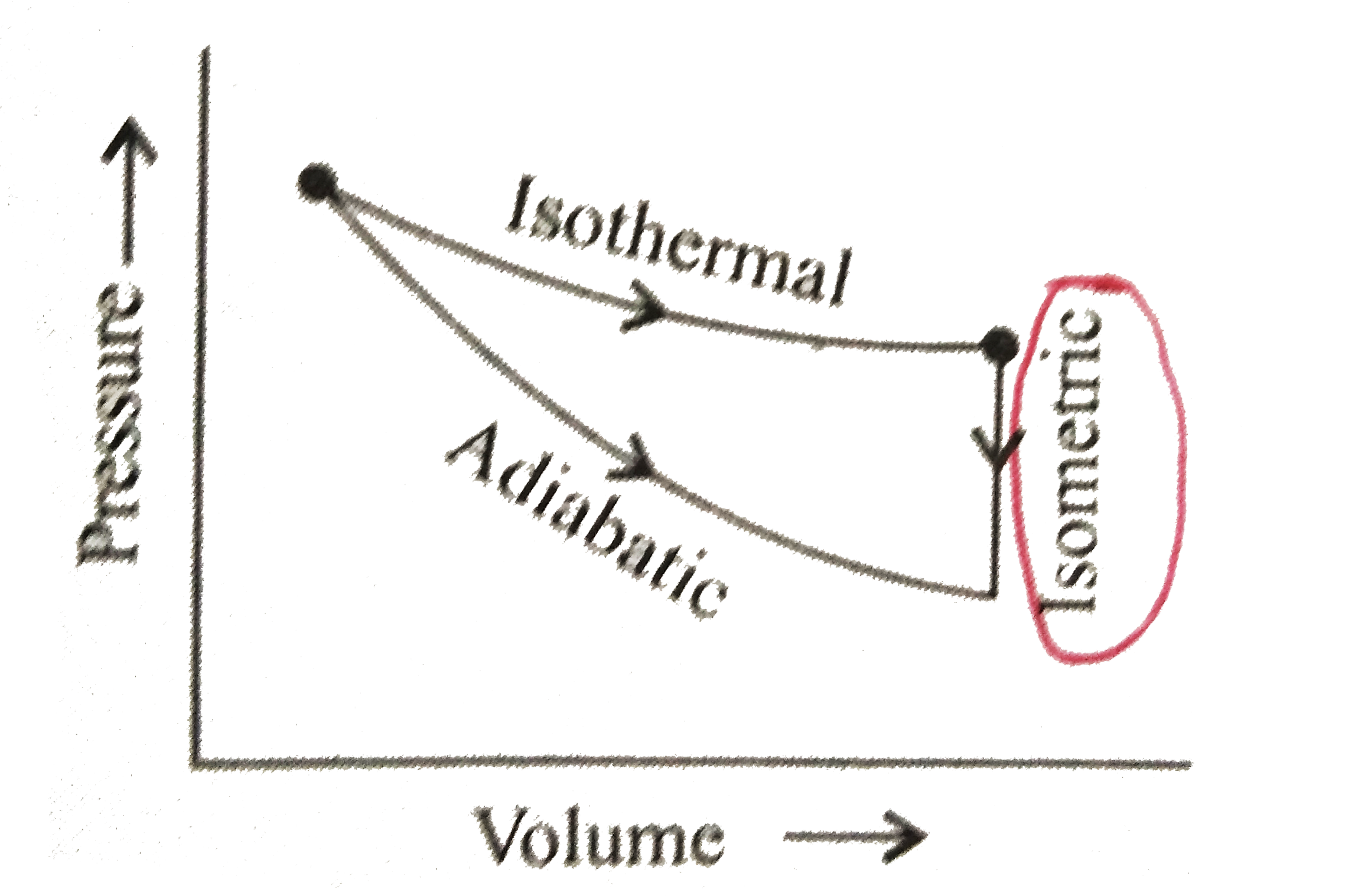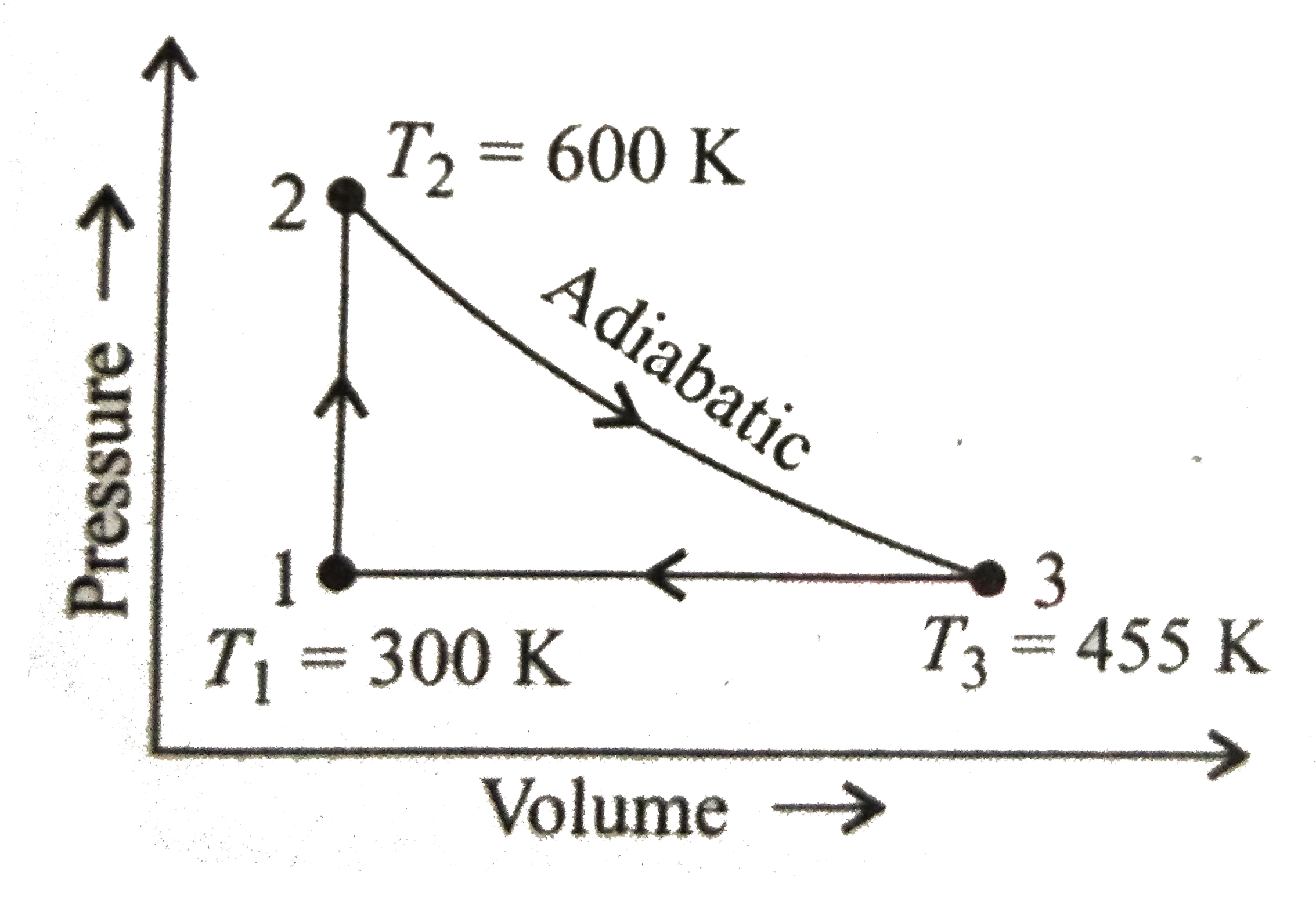Complete Solutions to Ex 6.1 of chapter THERMODYNAMICS of Class 11 book with complete answers and questions
| Class 11 | CHEMISTRY |
| Chapter | THERMODYNAMICS |
| CENGAGE CHEMISTRY | Ex 6.1 |
| Number Of Questions | 26 |
| Academic Year | 2023-24 |
Calculate `DeltaU`, internal energy change of a system, if it absorbs `25 kJ` of heat and does `5kJ` of work.
02:15View SolutionIn a certain process, `400J` of work is done on a system which gives off `200J` of heat. What is `DeltaU` for the process?
02:11View SolutionDuring a process, a system abdorbs `710J` of heat and does work. The change in `DeltaU` for the process is `460J`. What is the work done by the system?
01:33View SolutionDuring a process, the internal energy of the system increases by `240kJ` while the system performed `90 kJ` of work on its surroundings. How much heat was transferred between the system and the surroundings during this process. In which direction did the heat flow?
03:35View SolutionCalculate the work done when `1.0` mol of water at `373K` vaporises against an atmosheric pressure of `1.0atm`. Assume ideal gas behaviour.
03:11View SolutionWhat will be the volume change if `607.8 J` of work is done by a system containing an ideal gas? The surroundings exert constant pressure of `20atm. (1L-atm = 101.3J)`
02:30View Solution`500cm^(3)` of a sample of an ideal gas is compressed by an average pressure of `0.1 atm` of `250 cm^(3)`. During this process, `10J` of heat flows out to the surroundings. Calculate the change in internal enegry of the system.
04:32View SolutionThree moles of an ideal gas are expanded isothermally and reversibly at `27^(@)C` to twice its original volume. Calculate `q, w,` and `DeltaU`.
04:35View Solution`2.8g` of `N_(2)` gas at `300K` and `20atm` was allowed to expand isothermally against a constant external pressure of `1atm`. Calculate `DeltaU, q,` and `W` for the gas.
04:50View SolutionState whther each of the following will increase or decreases the total enegry content of the system:
a. Heat transferred to the surroundings
b. Work done on the system.
c. Work done by the system.03:26View SolutionTwo moles of an idela gas at `2atm` and `27^(@)C` is compressed isothermally to one-half of its volume by an external pressure of `4atm`. Calculate `q,w`, and `DeltaU`.
04:53View SolutionA simple of gas present in a cylinder fitted with a frictionless piston expands against constant pressure of `1atm` from a volume fo `2L` to `12L`. During the process, it absorbs `600J` of heat from the surroundings. Calculate the change in internal energy of the system.
02:33View SolutionOne mole of an ideal mono-atomic gas at `27^(@)C` expands adiabatically against a constant external pressure of `1atm` from a value of `5dm^(3)` to `15dm^(3)`.calculate (a) `q` and (b) `w`.
02:42View SolutionA `5L` cylinder contained `10` moles of oxygen gas at `27^(@)C`. Due to sudden leakage through the hole, all the gas escaped into the atmosphere and the cylinder got empty. If the atmospheric pressure is `1.0atm`, calculate the work done by the gas.
04:24View SolutionAdiabatic expansion of an ideal gas is accompanied by
03:33View SolutionFor a cyclic process, which of the following is true?
03:08View SolutionOne mole of a gas is heated at constant pressure to raise its temperature by `1^(@)C`. The work done in joules is
02:13View SolutionWhat work is to be done on `2mol` of a perfect gas at `27^(@)C` it is compressed reversibly and isothermally from a pressure of `1.01 xx 10^(5) Nm^(-2) to 5.05 xx 10^(6)Nm^(-2)`?
03:18View Solution`1mol` of an ideal gas undergoes reversible isothermal expansion form an initial volume `V_(1)` to a final volume `10V_(1)` and does `10kJ` of work. The initial pressure was `1xx 10^(7) Pa`.
c. Calculate `V_(2)`.
b. If there were `2mol` of gas, what must its temperature have been?04:30View SolutionA sample of `2kg` of helium (assumed ideal) is taken through the process `ABC` and another sample of `2kg` of the same gas is taken through the process `ADC`. Then the temperature of the states `A` and `B` are (given `R = 8.3J mol^(-1)K^(-1))`
 04:54View Solution
04:54View SolutionAn ideal diatomic gas is caused to pass throguh a cycle shown on the `P-V` diagram in figure, where `V_(2) = 3.00V_(1)`. If `P_(1),V_(1)`,and `T_(1)` specify the state `1`, then the temperature of the state `3` is
 05:16View Solution
05:16View SolutionA heat engine carries one mole of an ideal mono-atomic gas around the cycle as shown in the figure below. Process `1 rarr 2` takes place at constant volume, process `2 rarr 3` is adiabatic and process `3 rarr 1` takes place at constant pressure. Then the amount of heat added in the process `1 rarr2` is
 04:30View Solution
04:30View SolutionOne mole of an ideal mono-atomic gas is caused to go through the cycle shown in the figure below. Then the change in the internal enegry in expanding the gas from `a` to `c` along the path `abc` is:
 05:04View Solution
05:04View SolutionCalculate the work done by `1.0 mol` of an ideal gas when it expands at external pressure `2atm` from `10atm` to `2atm` at `27^(@)C`
03:56View Solution`3.0` moles of an ideal gas at `27^(@)C` is compressed at constant temp. reversibly form a volume of `20L` to `10L` slowly increasing the external pressure calculate work done on the gas `w,q,DeltaU` and `DeltaH`.
05:44View SolutionWhen 3mole of an idela gas expand reversibly and isothermally five times its initial volume `6kJ` heat flow into it. What must be the temperature of the gas?
04:15View Solution
Ex 6.1 questions and complete solutions for chapter THERMODYNAMICS of CENGAGE CHEMISTRY (ENGLISH) of Class 11
All Exercises from CENGAGE CHEMISTRY Class 11 CHEMISTRY THERMODYNAMICS
- Archives (Assertion-Reasoning)
- Archives (Fill In The Blanks)
- Archives (Interger)
- Archives (Multiple Correct)
- Archives (Single Correct)
- Archives (Subjective)
- Archives (True/False)
- Ex 6.1
- Ex 6.2
- Ex 6.3
- Ex 6.4
- Ex 6.5
- Exercise
- Exercises (Assertion-Reasoning)
- Exercises (Fill In The Blanks)
- Exercises (Interger)
- Exercises (Linked Comprehension)
- Exercises (Multiple Correct)
- Exercises (Single Correct)
- Exercises (Subjective)
- Exercises (True/False)
- Multiple correct Answer Type
- Paragraph for Problem
- Solved Examples
- True/False Type
